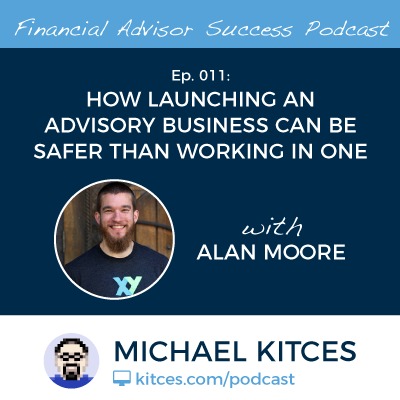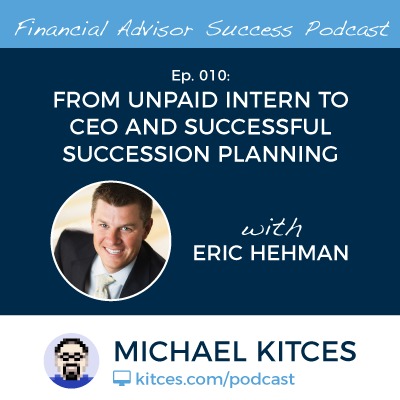Finding your first good job as a financial planner can be tough. Not only because it's challenging just to find a job at all, but because it's not always clear up front which firms really do financial planning or not, and which jobs will be real financial planning jobs versus just a sales job. In many cases, the only way to find out is to take the job that's available, make the best of it, and hope it turns into a good long-term career path. Except when it turns out it's really not a good match at all... and then suddenly the challenge is figuring out whether it's time to leave, and whether having a short-term job stint on your resume will hurt your future career chances even more! So what should you do?
In this week’s #OfficeHours with @MichaelKitces, my Tuesday 1PM EST broadcast via Periscope, I discuss how to know it's time to leave your advisory firm to find another opportunity - based on whether the firm was a bit fit philosophically, or just not a good long-term growth opportunity - and best way to handle the situation if you find yourself in it.
First and foremost, though, remember that the best way to fix a problematic situation is not to make a change at all, but try to change the firm from within, rather than just running away from the problem. If you are worried about the investment or planning philosophy, or want to know if there's a better long-term career opportunity, then ask - broach the conversation with the firm owner. But it's important to be tactful in how you do this. If you are critical of your boss or the firm owner, they will likely just defend themselves, because that's human nature. Instead, come up with an actual solution, and offer it by having a "what if" conversation rather than a confrontational "why" conversation. If you come to the table with a proactive solution, most firm owners will actually be happy to work with you, adopt a solution, and get the firm in a better position than it was before!
Similarly, when it comes to career opportunities, if you want a career path, you may need to ask for it! I'm always amazed at how often people complain about having a lack of a career track, when they've never raised the conversation themselves! And realize that for most smaller advisory firms (which is most firms), this may be the first time they've taken someone through a career track, so the reality is they literally don't know what their career path is. Don't just sit back and expect that a perfect career track is going to be waiting for you, but instead, initiate the conversation ask about your opportunities with the firm as it continues to grow! The emphasis on continued growth is important, because both you and the owner want to be in a position of sharing a growing pie, rather than fighting over bigger pieces of a pie that isn't growing. If you find yourself in the latter position - in a firm that just isn't growing at all - the odds of a career track emerging are almost nil.
However, after having the tough conversations, the reality is you may decide that it really is time to leave. Perhaps something unethical is going on and you need to get out immediately. Or maybe the pie just isn't growing and that isn't going to change, so there's simply going to be nothing to share in the future. If that's the case, then what you should do next depends on the situation you are in. If you're really uncomfortable with how the firm operates and they truly aren't doing right by its clients, then get out right away. Life's too short for not doing right by your clients. But if it is "just" a lack of future growth, then realize that you can take your time and make a smart transition. Get your CFP experience (or finish the coursework if necessary!), save up some money for the transition, and take your time to truly do your due diligence on the next firm you work for. If you're checking the job boards and networking through industry associations, you may have a better chance of finding a good fit.
But in either case, understand that ultimately you don't have to worry about being labeled a "job-hopper" – or at least if it only happens one or two times. Just be straightforward about your prior situation, and take ownership for not doing your proper due diligence the first time around. Most advisors will understand that this happens, and will appreciate the attention you are paying this time. But whatever you do, don't make the transition without learning from it! If you go through too many entry-level positions without figuring this out, then ultimately, you may have good reason to worry about being labeled a job-hopper!

 Welcome back to the eleventh episode of the Financial Advisor Success podcast!
Welcome back to the eleventh episode of the Financial Advisor Success podcast! Welcome back to the tenth episode of the Financial Advisor Success podcast!
Welcome back to the tenth episode of the Financial Advisor Success podcast!
